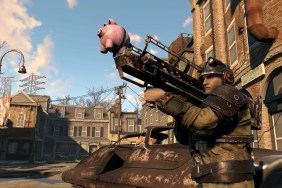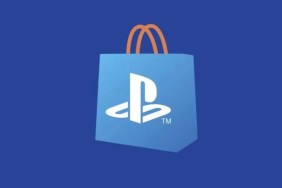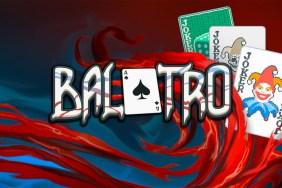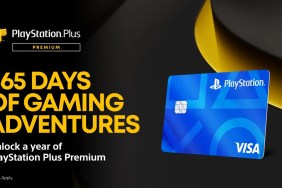Vault Dwellers, the time has finally come: we can discuss that Fallout 76 event from last week. The showing took place at the Greenbrier Resort in White Sulphur Springs, WV, which gave us quite a close look at the real region Fallout 76 is modeled after. But when all’s said and done, the trip itself doesn’t matter. A three-hour gameplay demo is the reason we were there, and by god, that’s what we’ve been dying to discuss.
Same Old Song and Dance
Understandably, the gaming community has been wary of the game since its reveal. Unlike other Bethesda games, there are no human NPCs in Fallout 76—robots and player-controlled characters are the only friendly beings in Appalachia, the virtual West Virginia. This change also means there is no branching dialogue in Fallout 76, and a smaller roster of interesting folk to interact with. But that doesn’t mean the typical Fallout charm is gone. The beloved lore lives on through a wide variety of these robots, as well as holotapes, map events, quest chains, and subtle environmental storytelling.
“We’ve never been able to tell the story of people who survived the war,” said Emil Pagliarulo (the design director for Fallout 76) in a roundtable interview. “So this is like—you actually have holotapes of people who lived through it and those initial days. It’s a lot sadder and a lot darker in some ways. It’s also still funny in a lot of ways, too.”
“It’s definitely challenging to take away the dialogue trees from our design teams,” stated Chris Mayer (Fallout 76‘s development director in Austin, TX) later in the talk. “It’s how they’ve made video games for a long time. But when we went the direction of, ‘what if every human you meet is another real human?’—these guys had to think much more creatively, to find new ways to tell stories and keep the players engaged.”
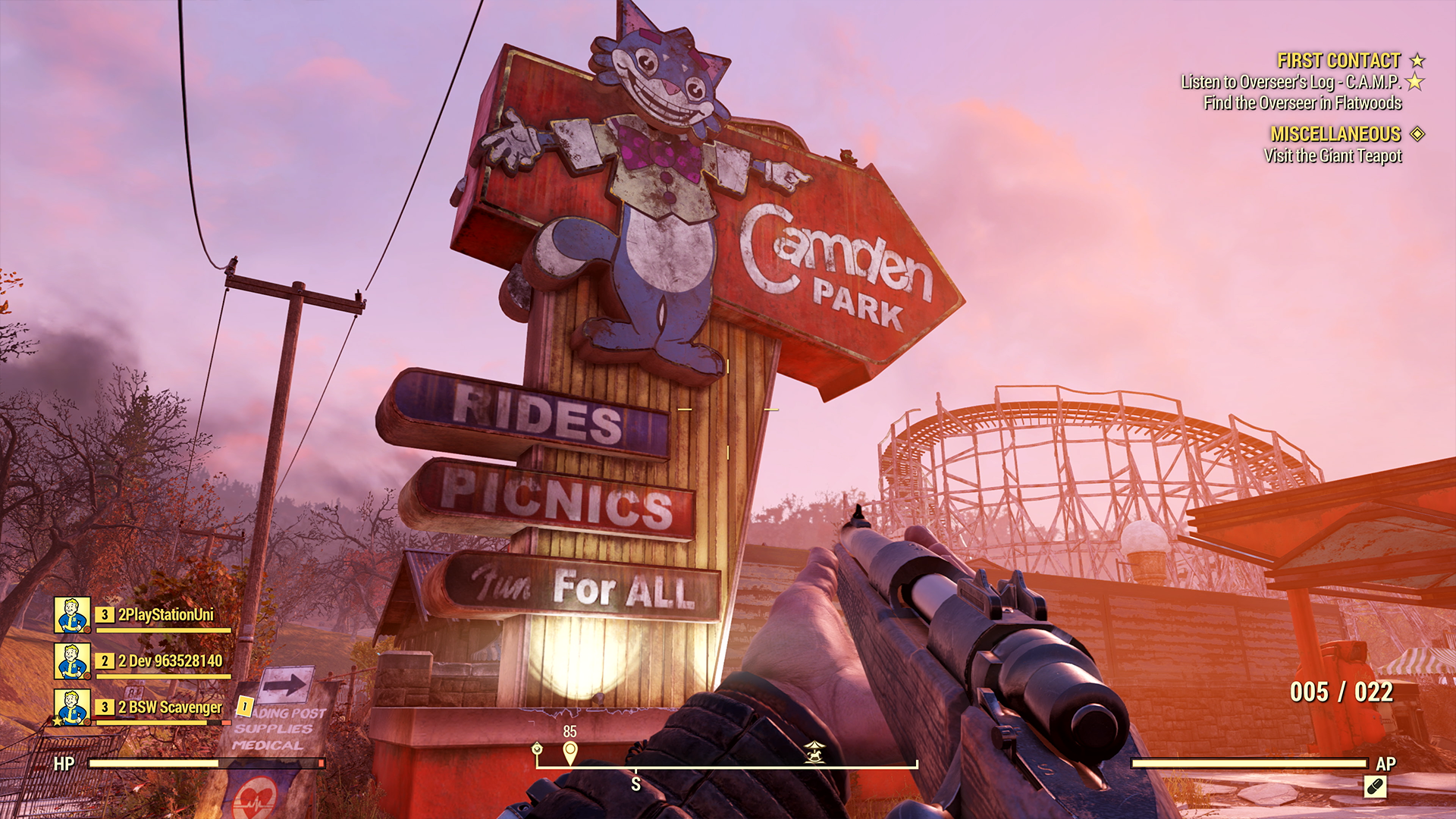
It’s safe to say that, in our playthrough, the only downside we grappled with was the lack of lore-providing humanoid characters. But even then, Appalachia is rich in history and treasure, simply provided through other means. In every other regard, Fallout 76 feels like a normal Fallout game, except that you can play with your friends and build a shoddy fortress. Those are optional though: my first point-of-order was to run away from my team and towards my hometown. As a singleplayer game, Fallout 76 retains its rustic charm: the world doesn’t become less interesting just because you’re by your lonesome. That being said, time and location-based events encourage lone wanderers to partake in group play every now and then, rewarding them with rarer items and weapons. One dev pointed out that they’re a great way to earn stimpaks, which I entirely used up in my solo excursion.
I made an attempt to play Fallout 76 like I would any other Fallout title: by exploring to my heart’s content, whether alone or with a mate. This meant I fully side-stepped base-building, which seemed to warrant a large amount of resources and blueprints. Both of which costed time and Bottle Cap currencies that I simply couldn’t expend during my demo. While building a quaint shack with my squad would have added a fun new layer to the experience, I didn’t feel that I missed out on anything by forgoing it. Fallout 76 is packed with the same amount of intriguing areas, fun weapons, and quirky enemies as any other Fallout game—sometimes even more so.
The game feels dense in an interesting way, with something new catching your eye over every hilltop. This was intentional, according to project leader Jeff Gardiner. The way he tells it, the server limit scaled down to hold 24 players and the team realized Appalachia held a lot of dead space. In an effort to add in extra content and pack Appalachia with meaningful content, they’ve now neared around 70,000 different weapon mods, workshop items, and crafted armor pieces. With that kind of library waiting in the wings, you can easily find something useful in every corner of the map.
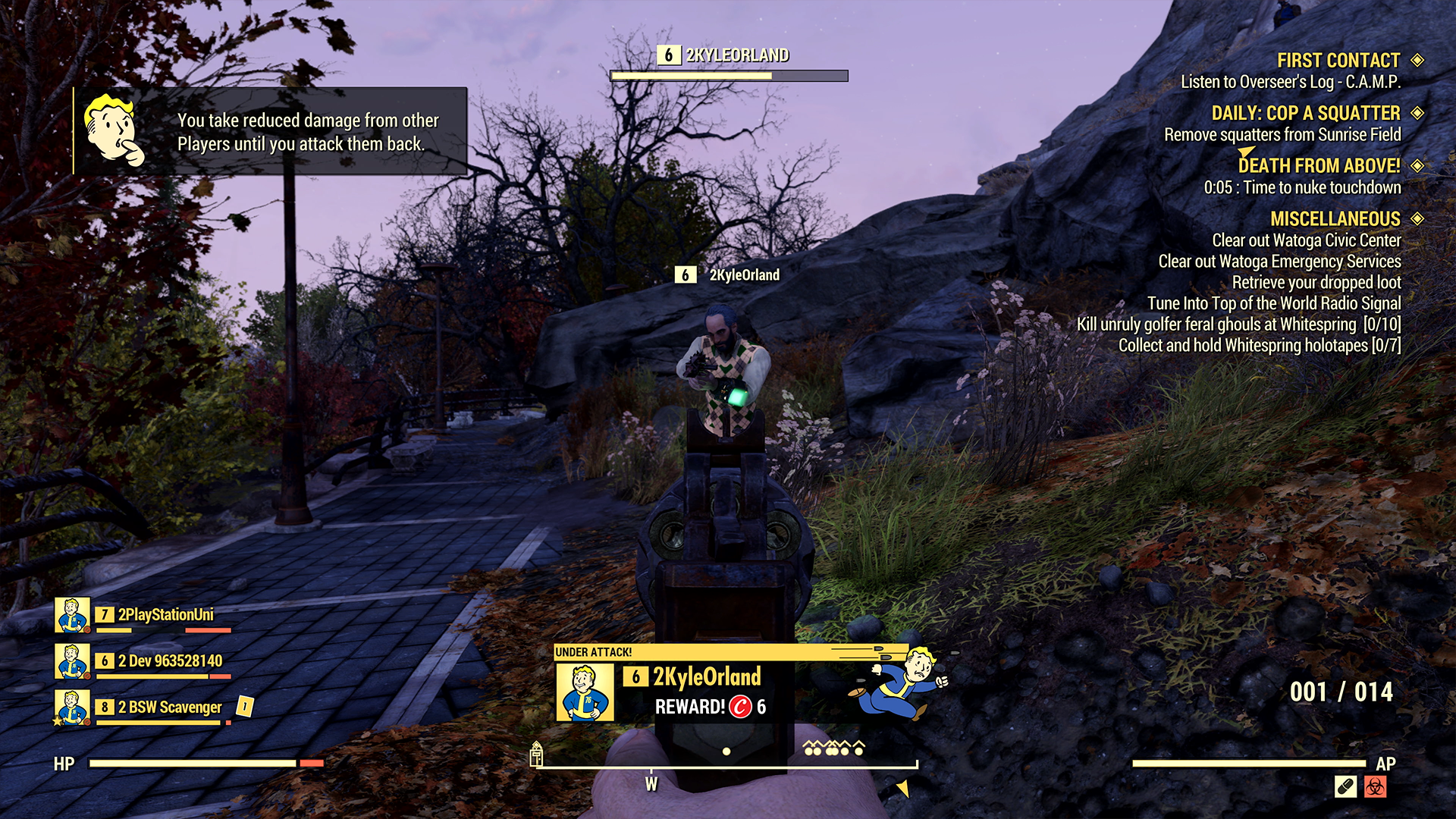
Hatfield vs. McCoy
You won’t be playing Fallout 76 with just your friends, though; your enemies will be there, too! Player-versus-player combat works a little differently than it does in most games. When one player attacks another, the victim takes reduced damage until they retaliate. In a sense, this means true PvP duels must be reciprocated and won’t break out in every situation. It’s a drawback for the initiator: you’ve revealed your position and intent, and the second your victim shoots you back, you’ll take full damage—meaning they’ve already turned the tides on you. While this is an odd system, it adds an interesting meta-layer when considering team-wide conflicts. Some teams might send single members into a fight as bait, waiting in the tall brush or dense forests as enemies snipe out their friends. This is entirely possible too: the foliage and beauty of Appalachia make for the perfect espionage action zone.
Of course, the other player may not retaliate. In such a case, it’s possible to continue dwindling a player’s health down and kill them. If you kill a player without taking damage from them, this is known as murder (hopefully this sounds familiar to the real act, for all sound-minded readers). If you murder another player, you’re labelled as such. All players disappear from your map, while you are heavily marked on theirs. You become a giant red blip, and are slapped with a hefty bounty that, should you fall in a subsequent firefight, will be paid from your own pocket.
This is a really smart way to disincentivize the griefing of other players, and encourage a healthy PvP environment. The actual benefits to PvP were not immediately evident though, aside from simply having a friendly duel. Upon death, players lose their junk, which they can easily find elsewhere and scrap into building materials. While it’s great that Fallout 76 discourages players to troll one another, it also doesn’t noticeably reward friendly combat as far as I could tell.

Mama Says I’m Special
In addition to general atmosphere, combat, and exploration, we got a good look at Fallout 76‘s leveling system. Seeing as NPC interactions don’t exist in a typical manner, the series’ longstanding S.P.E.C.I.A.L. progression style has been revamped. Instead of subtly influencing your dialogue options with simple skill points, S.P.E.C.I.A.L. now uses a card-based system to adjust a wide array of stats. These cards all improve your combat abilities, scavenging skills, or teamwork in some fashion. Of course, past iterations of the system have altered stats, but the inclusion of online multiplayer means these numbers had to be reworked—as did their delivery mechanism.
As you can see in the video above, every level awards you a skill point, which can be placed into any letter of the S.P.E.C.I.A.L. tree. These letters designate various attributes, but their point rank determines how many perk cards you can equip of each attribute. For example, two points in Strength means you can equip two Level One perk cards, or one Level Two card. These cards are obtained from a “perk pack,” a virtual foil of cards obtained after every few levels. You can also choose one card from a selection every time you use a skill point.
Some of these skills are mildly useful (“Run faster with a pistol in-hand”) while others were downright glorious (“Earn 5% more experience when in a team.”) Our guide could pick a single card to share with the entire team, meaning we had it equipped even with out owning it. It wasn’t apparent if this was something he could do because he was the party leader, or because he was a guide, though I’d assume the former.
Take Me Home
Fallout 76 did bring a few changes to the series formula, and it’s difficult to discern, adjust to, and recount every one from a single demo. But if there’s any impression I was left with, it’s this: it’s Fallout with your friends. This was the initial design direction for the project, the point every developer hammered home, the way the demo was laid out, and even the buzz of the show floor. It’s intentional that Fallout 76 is an online game that doesn’t always feel like an online game, a line they’re quick to draw after Washington Post editor Gene Park mentioned The Elder Scrolls Online.
“We didn’t want to make just another MMO,” Mayer says. “We wanted to make something that felt like Fallout—felt a little bit closer knit with your friends—and make it feel more like a Bethesda game. As far as what you would expect with an open-world exploration; finding the details, really digging into the world that way.”
“Elder Scrolls Online is a fantastic game,” Pagliarulo adds. “It’s very much a traditional MMO in a lot of ways, it’s an excellent MMO. But Elder Scrolls Online doesn’t feel like playing Skyrim with your friends. [Fallout] 76 was always ‘What’s it like to play Fallout with your friends?'”
“One thing that always came up,” he later states. “Fallout 3, Fallout 4, Skyrim—people always wanted to play with their friends. And even the most popular mods would be multiplayer mods. It was the one most-requested thing from us. ”
Though it remains to be seen if Fallout 76 can live up to the expectations of franchise fans, it’s already lived up to those of its creators. It’s Fallout, with some extra base-building, a hunger/thirst meter, an adjusted storytelling model, and a much-requested multiplayer system. With my short time, I was thoroughly pleased, and I feel that quite a few fans will feel the same.
Fallout 76 was previewed at an event in West Virginia. Accommodations were provided by Bethesda.
Fallout 76 Preview
-
We've Played the Fallout 76 Preview
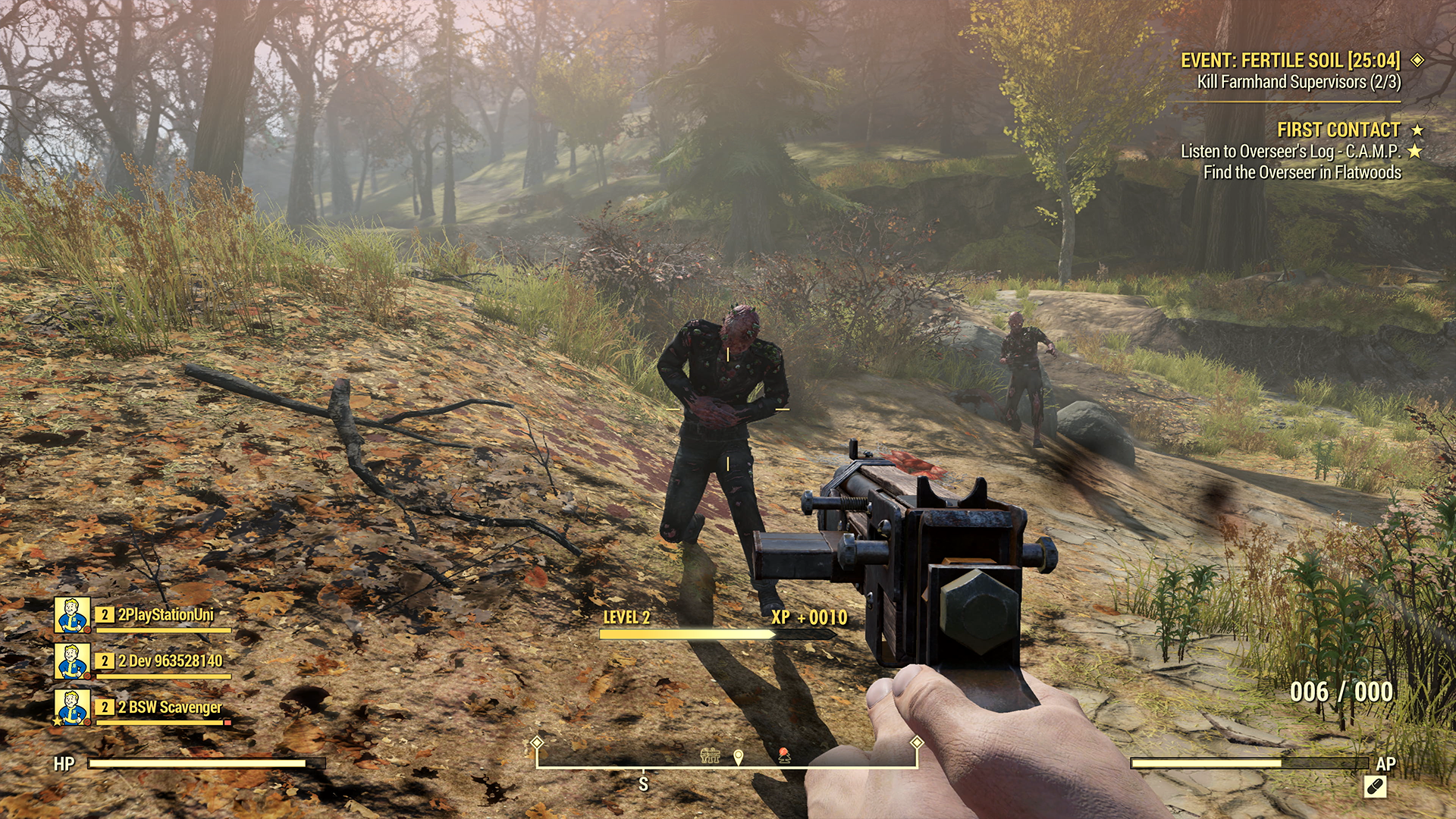
A large part of Fallout 76's story involves figuring out the nature of Scorchers, these shambling enemies.
-
We've Played the Fallout 76 Preview
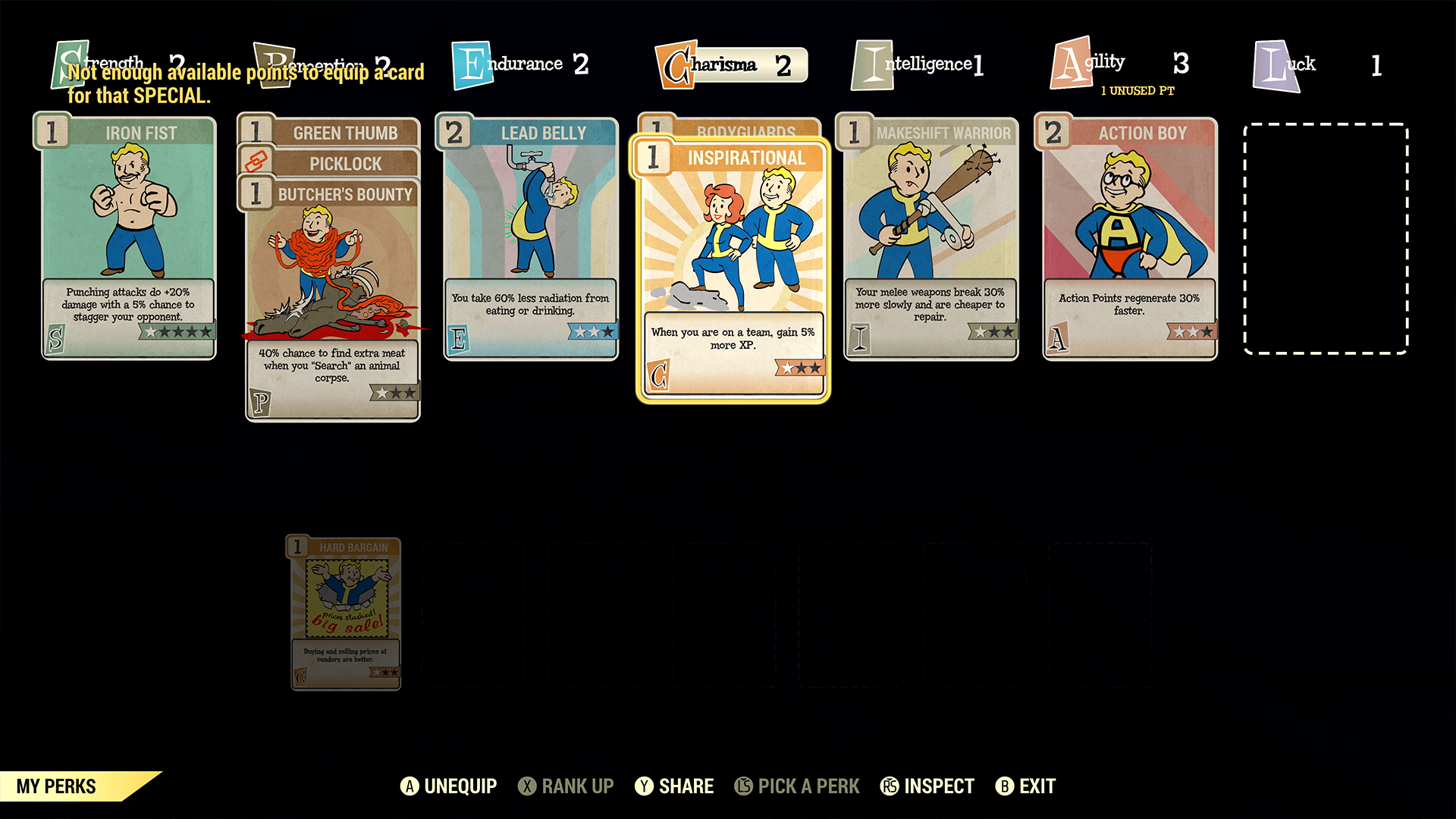
The S.P.E.C.I.A.L. system has been adjusted, and as you can see, it's now card-based!
-
We've Played the Fallout 76 Preview
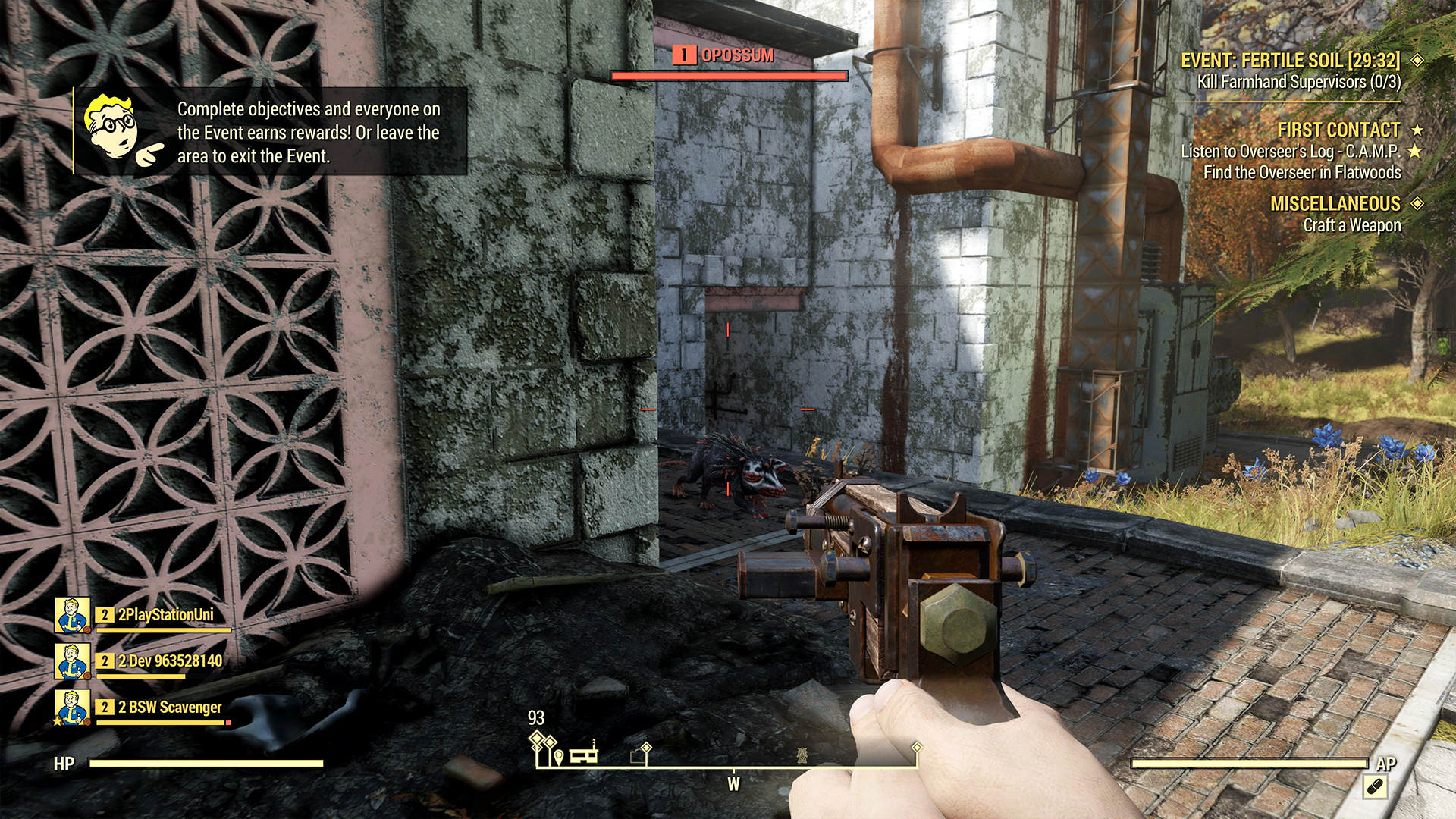
The juxtaposition of beautiful, rustic villages and decaying monsters is as thrilling as ever.
-
We've Played the Fallout 76 Preview
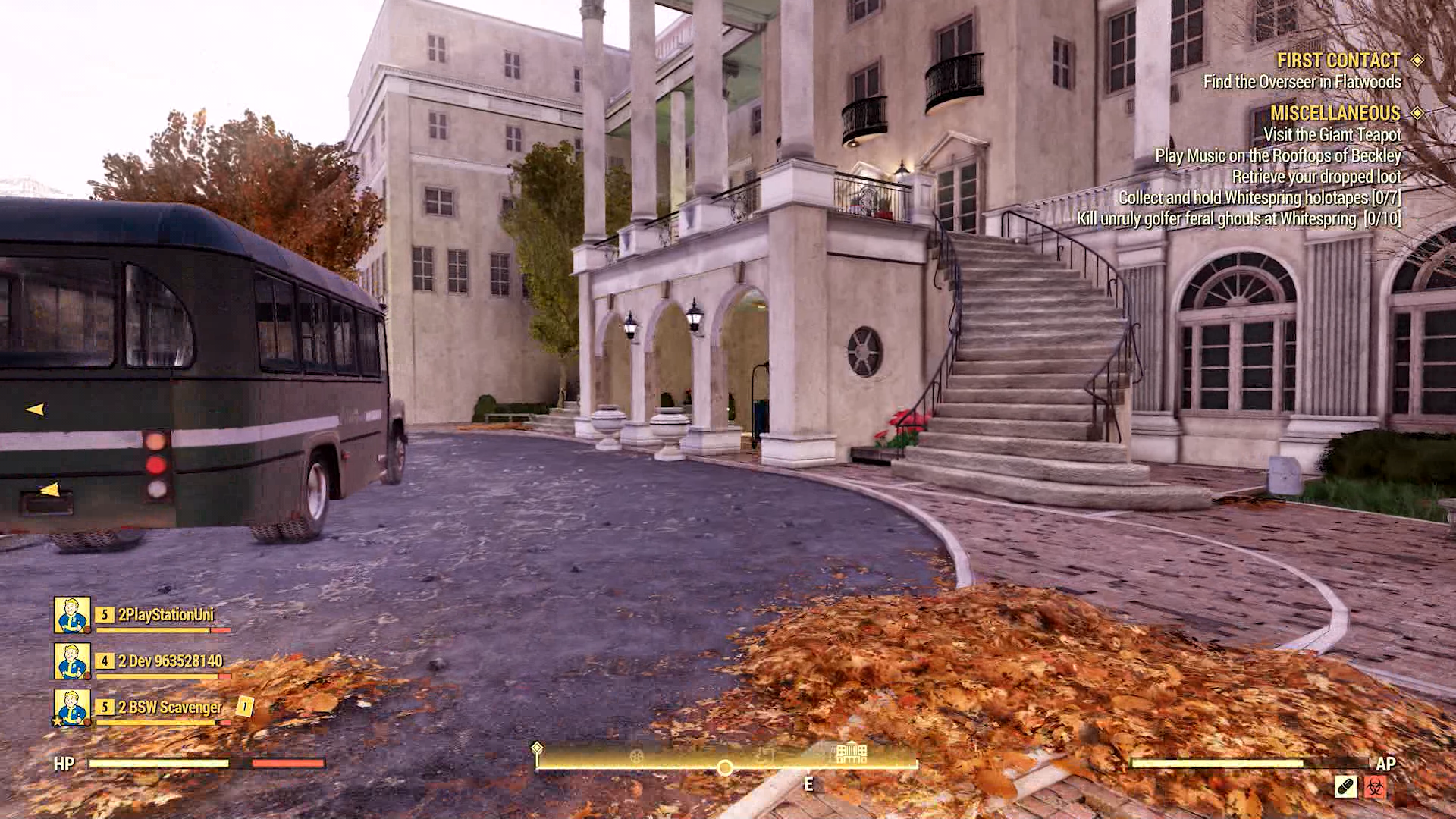
I can fully attest that the Greenbrier's virtual counterpart feels much the same as its real one.
-
We've Played the Fallout 76 Preview
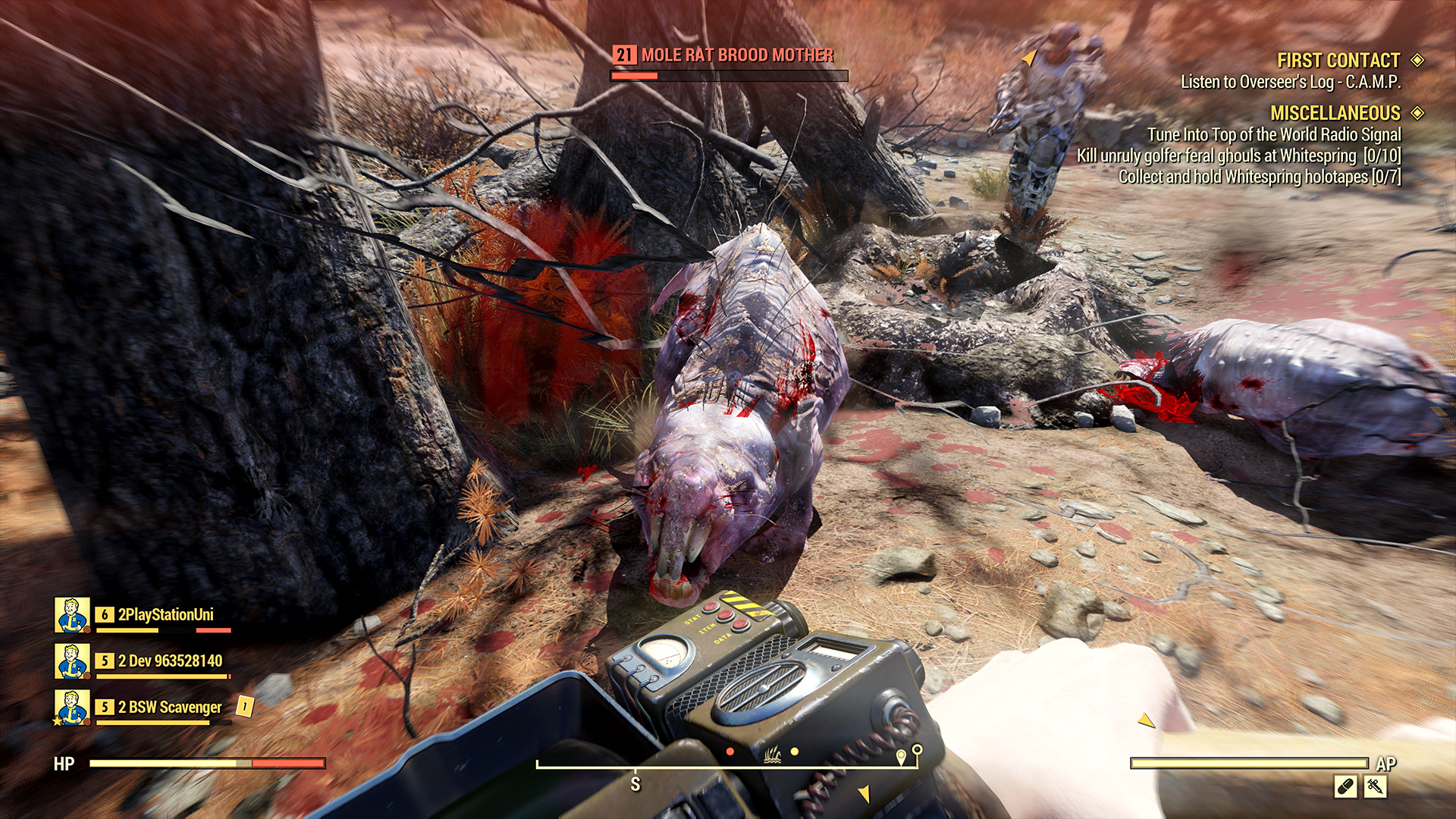
We ran into a few tough spots in our demo (both solo and as a team) but we persevered! The game has a way of putting you on edge but letting you pull through.
-
We've Played the Fallout 76 Preview
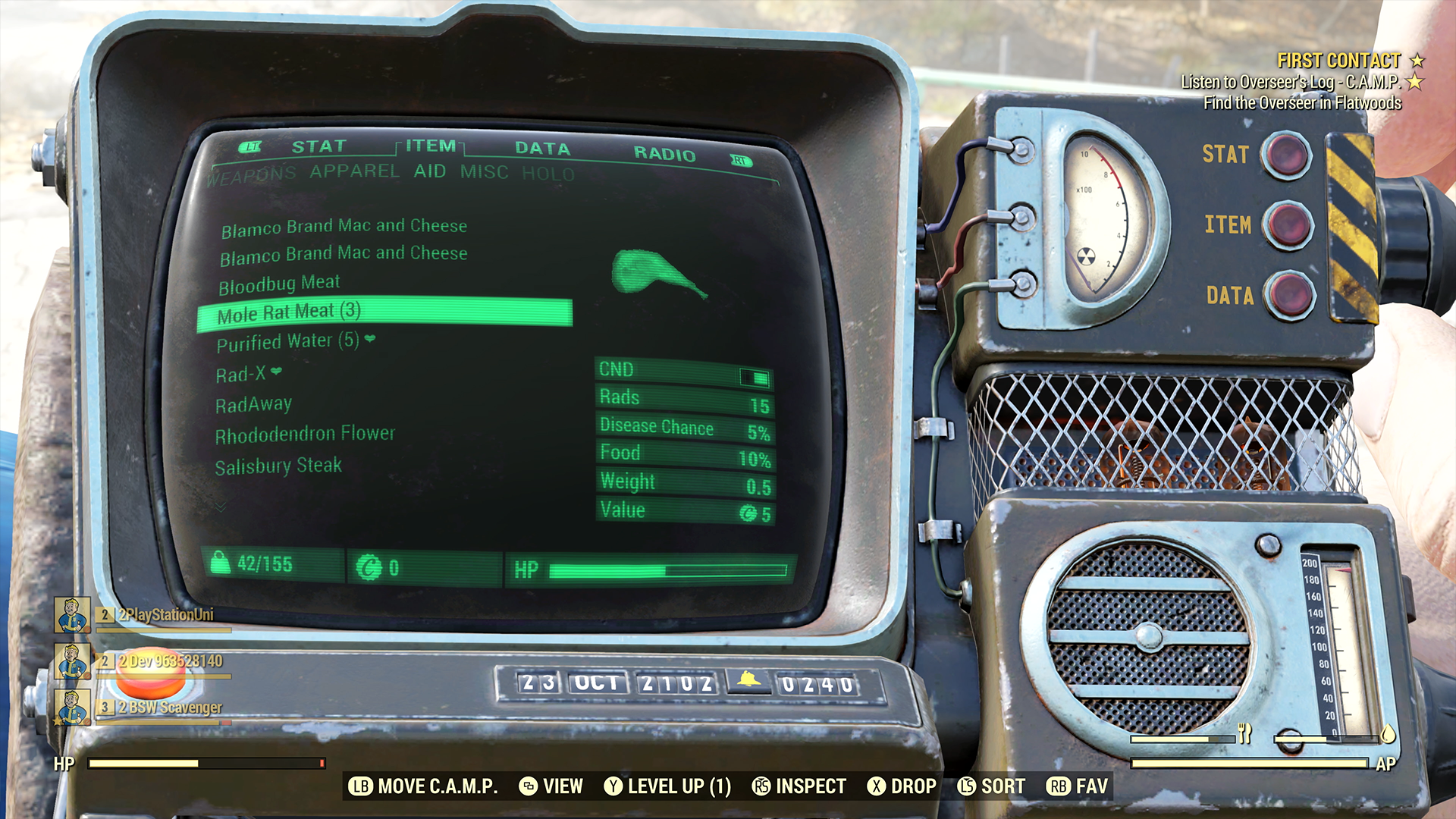
The Pip-Boy works about the same as it did in Fallout 4.
-
We've Played the Fallout 76 Preview
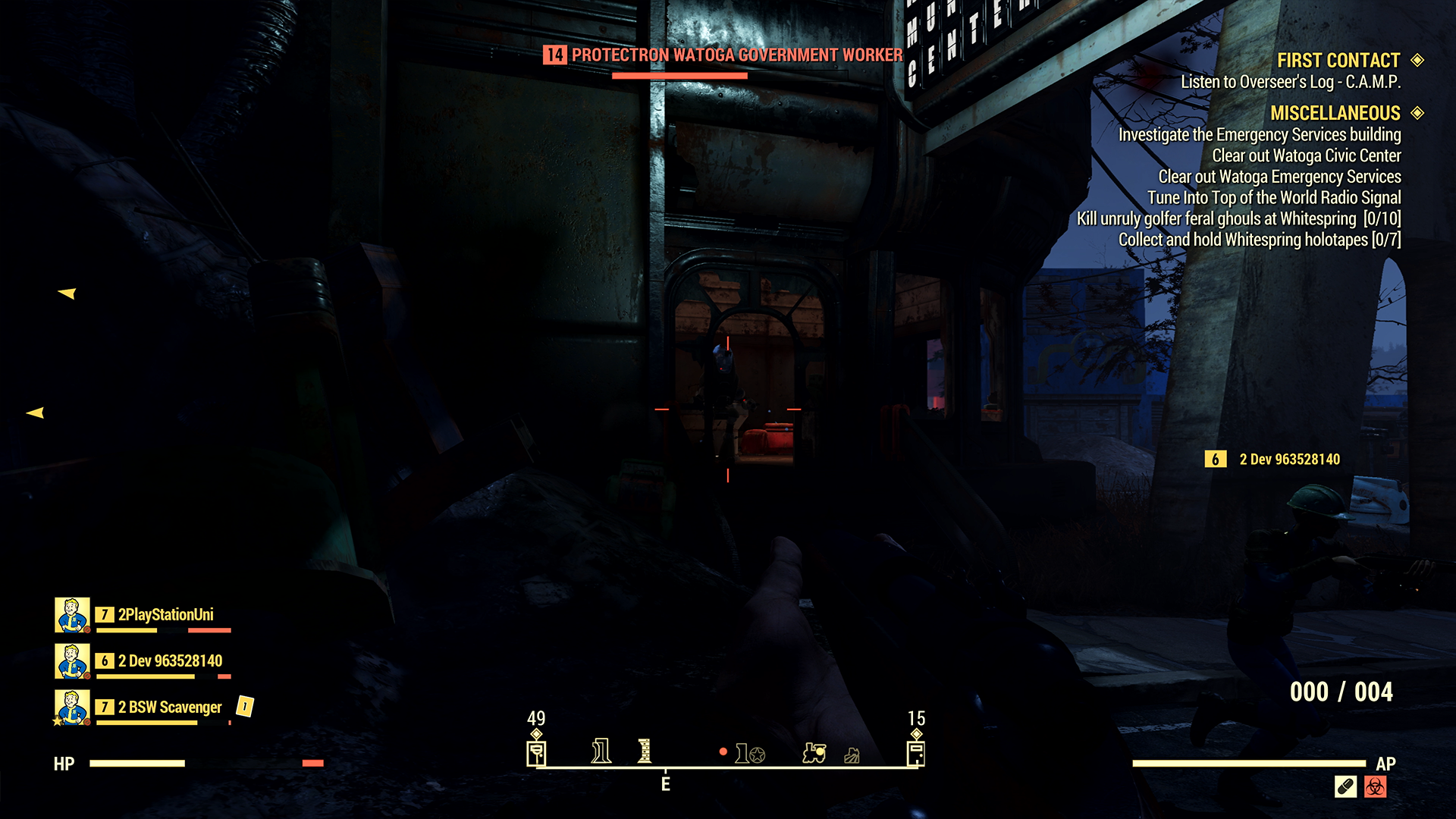
Robots aren't always friendly NPCs! Sometimes they end up as enemies, too.
-
We've Played the Fallout 76 Preview

Instead of getting a "Well Rested" buff, you and your team can play instruments for a minute or two to feel "Well Tuned."
-
We've Played the Fallout 76 Preview

Did we mention that our demo ended with a nuke hitting down near Vault 76?





